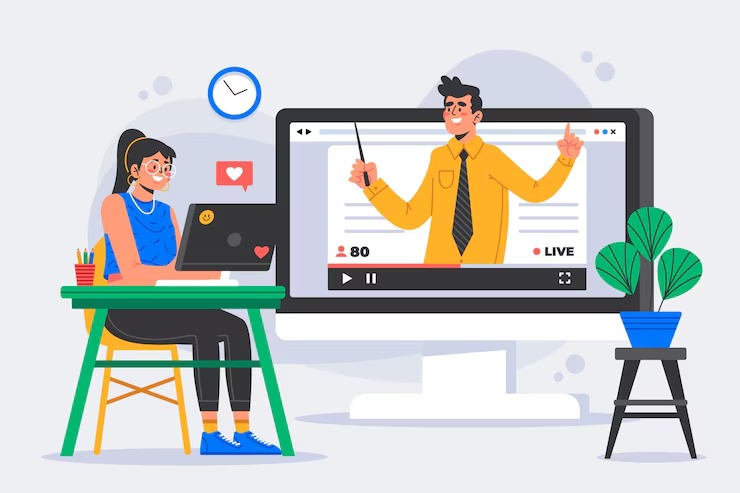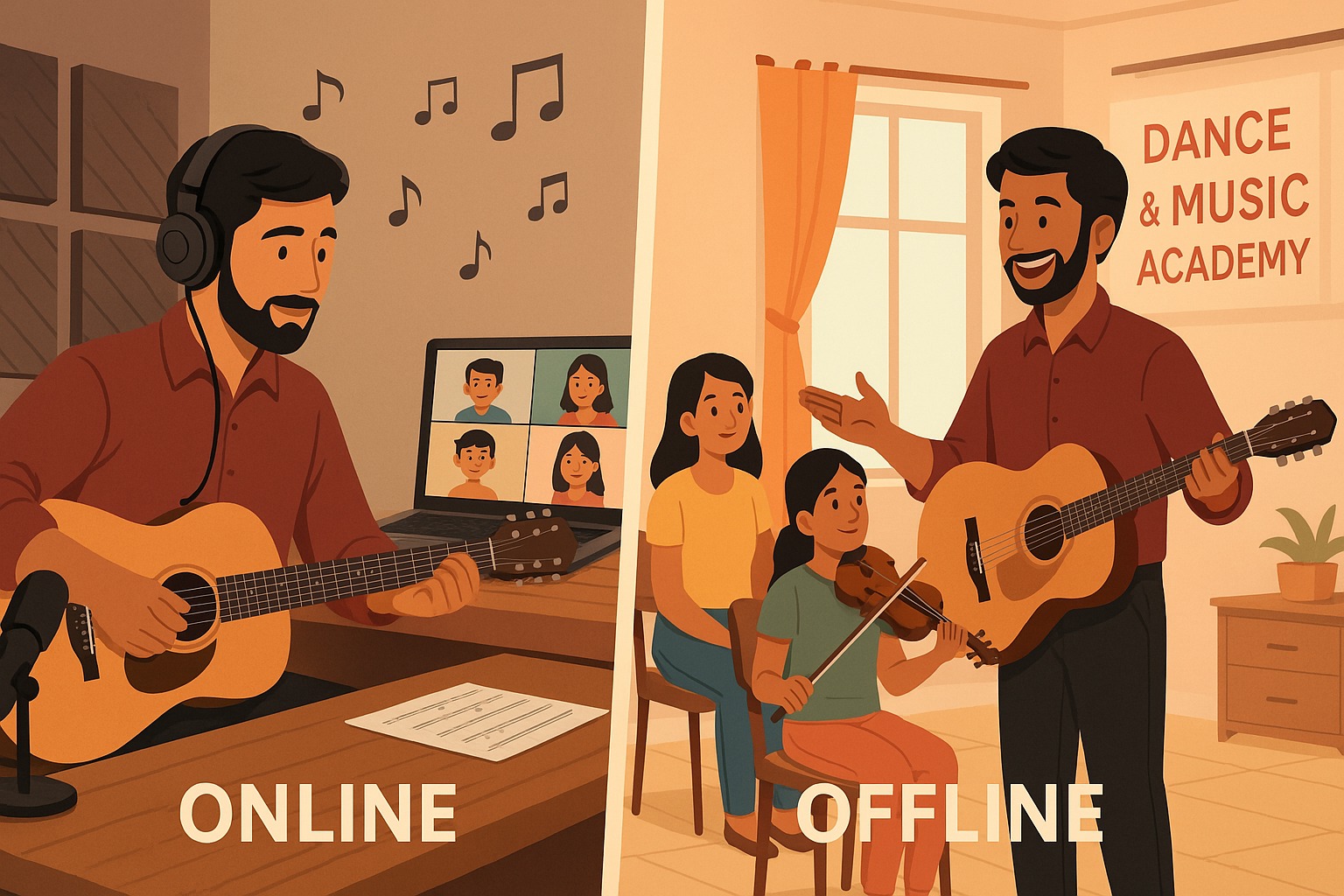Online Classes raised, after the COVID-19 pandemic, and everything changed including the way we learn. From music and dance to school subjects, many classes moved online. Today, even small academies and local institutes are thinking:
“Should we also offer online classes?”
This blog will help you decide. We will look at the good sides (pros) and difficulties (cons) of online classes, and we’ll help you understand what works best for your academy.
What Do We Mean by “Online Classes” for Academies?
Online classes mean teaching and learning through the internet.
It can happen through Zoom, Google Meet, or any video call app. For example:
- A music teacher teaching guitar from his studio to students sitting at home
- A dance class being live-streamed from an academy
- A tutor solving Maths problems using screen-sharing
Whether it’s singing, painting, yoga, or academics—online classes make it possible to learn from anywhere.
Also Read: 4 Step Free Guide: Should Your Music Academy Offer Both Physical and Online Classes?
The Benefits of Offering Online Classes

🟢 Reach More Students
You’re no longer limited to your local area. A dance teacher from Chennai can teach someone in Delhi or Dubai.
🟢 Flexible Timings
You and your students can choose class timings that suit both of you—morning, afternoon, or even night!
🟢 Lower Costs
No need to spend on big classrooms, electricity, or seating. All you need is a device and internet.
🟢 Use Digital Tools
Online classes allow screen-sharing, recorded lessons, presentations, feedback forms—all with just a few clicks.
🟢 Safer and More Comfortable
Students can learn from home, which many parents prefer, especially for younger kids or girls.
The Limitations and Challenges of Online Classes
But wait, not everything is perfect. Online classes have some drawbacks too:
👉 Whether you’re shifting to online classes or blending both formats, one big challenge is keeping staff attendance records clear and consistent. This ready-to-use Guru & Staff Attendance Sheet will help you track your team’s availability and maintain professional records — even in a remote setup.
🔴 No Physical Touch
Teachers can’t correct a student’s posture or hand movement easily. This matters a lot in dance or instruments like tabla or violin.
🔴 Internet or Device Problems
What if a student has poor internet or doesn’t own a laptop? It breaks the flow of learning.
🔴 Easy Distractions
Kids at home might get distracted by mobile games, doorbells, or even TV.
🔴 Less Group Energy
Group classes in person have energy, laughter, and fun. That magic is hard to get online.
What Students and Parents Prefer: Online vs. Offline

Younger students (age 5 to 12) often do better in offline classes, where they can move, play, and focus.
Older students or working professionals prefer online classes, because it saves travel time.
Parents like online classes for safety and flexibility, but they still want their kids to learn discipline, which happens better in offline spaces.
What Type of Classes Work Best Online?
Online classes aren’t a “one-size-fits-all” solution. Some classes work beautifully online, while others need the physical presence of a teacher.
✅ Work Well Online:
- Vocal music classes (like Carnatic, Hindustani, or Western singing)
- Theory-based lessons (music notation, ragas, or dance theory)
- Instruments like keyboard or guitar (with a clear camera angle and good sound)
- Art and craft workshops
- Academic tuitions and coaching (science, math, languages)
⚠️ Need Careful Planning Online:
- Dance classes (Bharatanatyam, Kathak, contemporary): Body movements may not be corrected properly in online classes.
- Instruments like tabla or mridangam: Sound clarity and hand positioning might be missed.
- Group activities (like theatre, drama, or choir singing): Energy may feel dull without in-person chemistry.
Tip: If you’re offering practical training, consider a hybrid model (offline + online mix).
Are Your Teachers Ready for Online Classes?
This is a very important question. Great teachers in offline setups may struggle if they’re not trained to handle:
- Camera angles for showing their hands/feet/body properly
- Mic and speaker quality
- Managing online discipline (keeping students engaged without shouting)
- Using tools like Zoom, Google Meet, PDFs, YouTube links, etc.
- Sharing feedback online
👉 You can conduct basic training sessions for your staff before launching online classes.
What Equipment and Setup Do You Need?
Going online doesn’t mean big expenses—but yes, you need a basic professional setup. Here’s what works best:
- A smartphone or laptop with good camera
- Tripod stand to fix the camera at proper height
- Good mic or headphones (especially for music or dance)
- Proper lighting (a ring light or bright tube light is enough)
- Quiet background with minimal noise
- Clean and tidy space behind the teacher (not cluttered)
👉 Bonus Tip: Add your academy’s branding (logo, banner, or name) behind your teacher to give a professional look.
Can You Try a Hybrid Model (Best of Both Worlds)
If you’re still confused between online and offline, go hybrid!
Here’s how it works:
- Offer weekday theory or practice in online classes
- Conduct weekend offline workshops or one-on-one sessions
- Let students choose their preferred mode
- Record online classes for those who miss live sessions
Hybrid models give freedom, flexibility, and discipline—everything your academy needs.
What’s Right for Your Academy?
There’s no fixed answer. Every academy is different. But the question you must ask is:
“Are we ready to provide quality education in an online classes format?”
If the answer is yes, online classes can open doors to students across India and even worldwide.
If the answer is not yet, focus on offline for now—but keep planning your online future.
Remember, online or offline—it’s the quality of teaching that matters the most.


